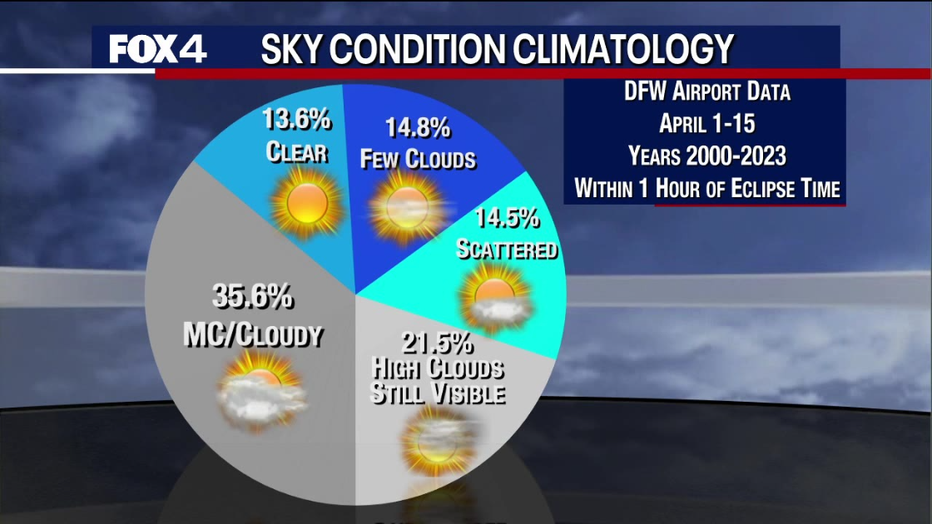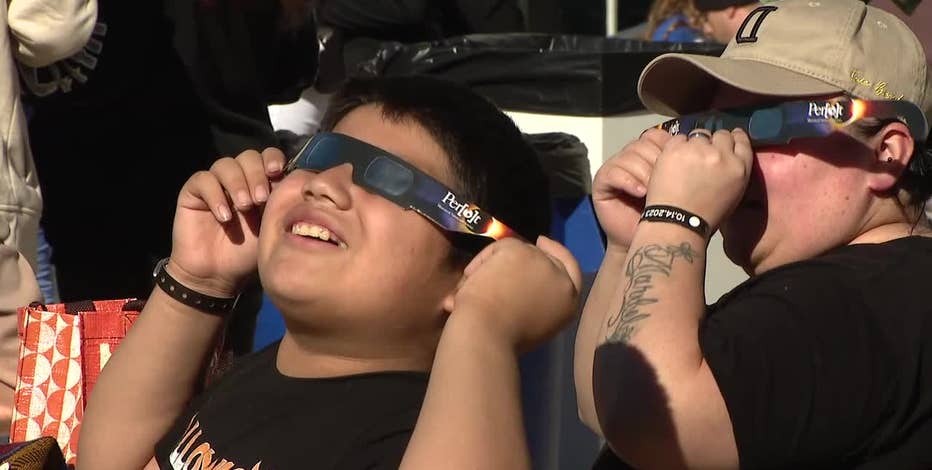What are the chances of a cloudy solar eclipse? Here's what history has to say
The Great North American Eclipse will pass over North Texas on April 8, giving Texans a chance at a once-in-a-lifetime view. Of course, Mother Nature would have to play along.
It's still too far out to know for sure if it will be cloudy for the total solar eclipse, but we can look at history for a few hints.
READ MORE: When will the solar eclipse happen near me?
Based on data from 1979 to 2022, cloud cover in North Texas for the first two weeks in April tends to be about 50 to 60 percent.
"It is very typical to see low clouds in the morning, giving way to sunshine in the afternoon," explained FOX 4 meteorologist Dan Henry.
According to climatology, the best odds of having a clearer sky would be down towards South Texas.
That timing will be critical to make sure you get the best view.
The partial eclipse will happen around 12:20 p.m. depending on where you live in North Texas.
READ MORE: How much the temperature will drop during the solar eclipse
The total eclipse will start around 1:40 p.m.

We took a look at the last 23 years of eclipse data within one hour of 1:40 p.m. for early April.
In that time, there is more than a 35 percent chance of mostly cloudy to cloudy skies, which would be poor conditions for viewing.
There is a 13 percent chance of crystal clear skies and about 14 percent of few clouds.
As we get closer to April 8th we will have a better idea of what the conditions will be in the sky.
What will happen during the solar eclipse?
During a total solar eclipse, the moon passes completely in front of the sun, momentarily turning day into night for those in the path of its shadow – like someone just turned off a light switch.
The event only happens when the moon’s orbit is close to Earth, and the celestial body blocks out the view of the sun, creating a shadow on Earth’s surface.
READ MORE: How to safely watch a solar eclipse
This is different from the "ring of fire" eclipse we saw in October.
Astronomers said that because the moon was farther from Earth, it didn't completely block out the sun, leading to a small circle of the sun being visible during the eclipse.
FOX Weather contributed to this report


